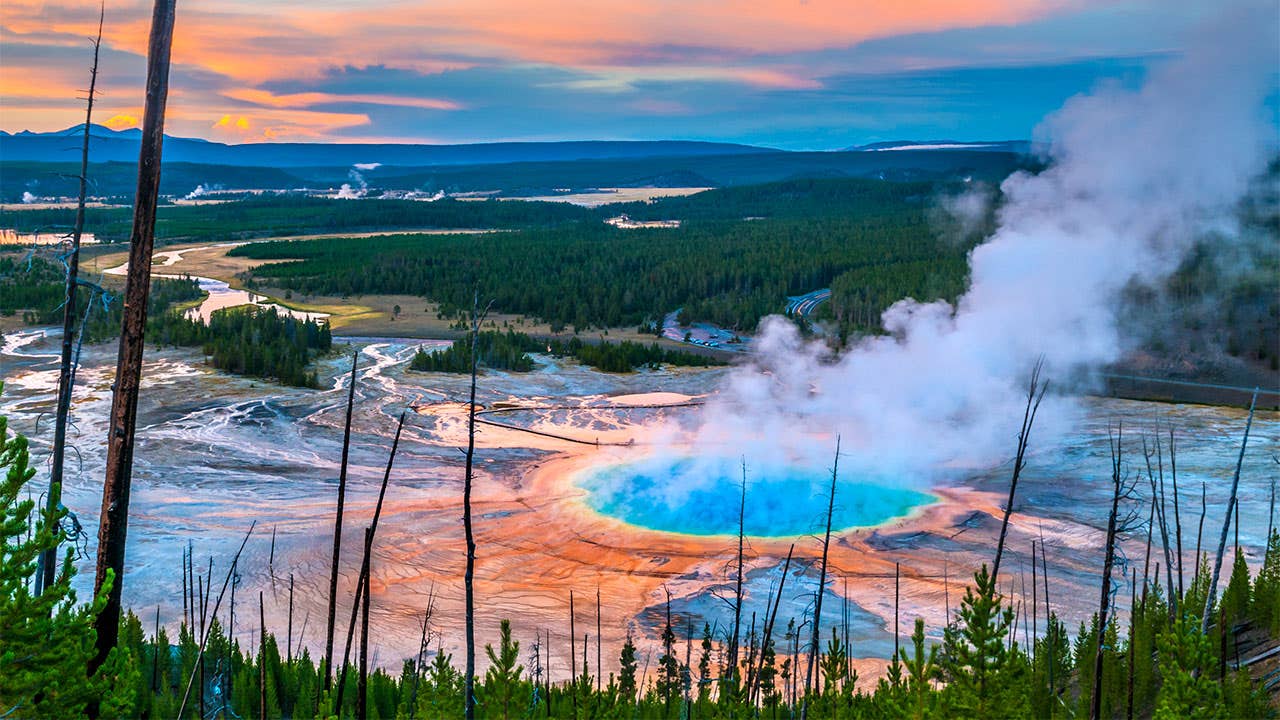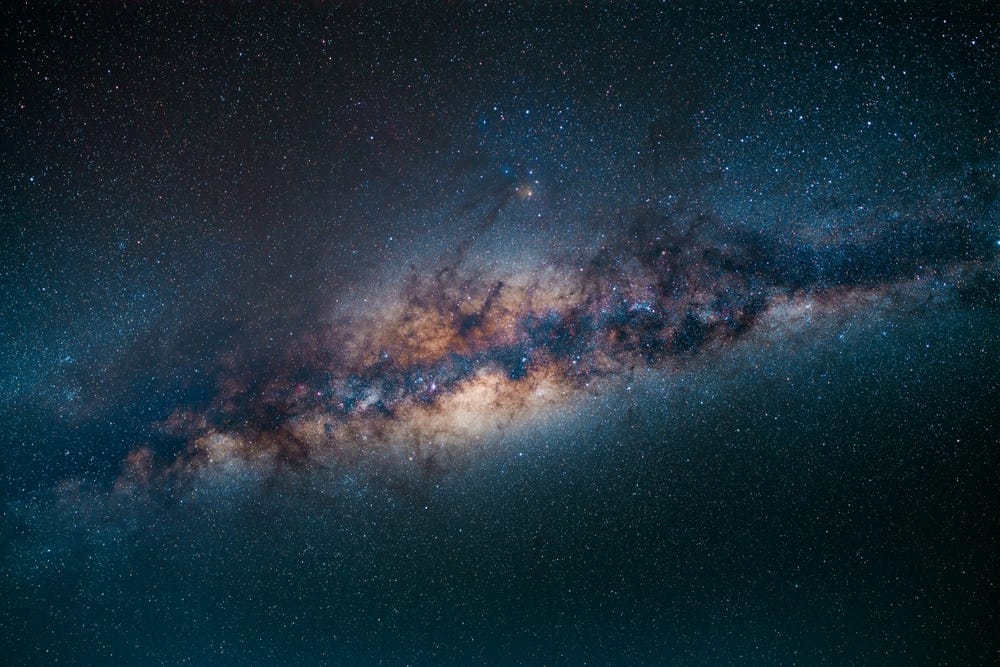Striking new images reveal the hidden magma network beneath Yellowstone
New seismic imaging reveals Yellowstone’s magma chamber sits 3.8 km below the surface and isn’t at risk of erupting anytime soon.

A new study has finally provided a detailed picture of what lies just below Yellowstone’s surface. (CREDIT: iStock.com / kwiktor)
Beneath Yellowstone National Park lies something extraordinary—a giant underground chamber filled with molten rock, trapped gases, and intense heat. For years, scientists have known about this volcanic reservoir. But only recently have they been able to see its upper boundary with real clarity.
A new study has finally provided a detailed picture of what lies just below the surface, and it’s changing how researchers understand the risks and mysteries hidden beneath this famous national park.
Thanks to the work of seismologists from the University of Utah and the University of New Mexico, the veil over Yellowstone’s volcanic heart is lifting. Their findings were published in the prestigious journal Nature, and the data is both eye-opening and reassuring.
A Sharper Look Beneath the Surface
The new research used an innovative approach. Rather than waiting for natural earthquakes, the team created their own seismic waves. Using a Vibroseis truck—a machine normally used in oil and gas exploration—they shook the ground at 110 different locations in Yellowstone. At each site, the machine delivered 20 powerful vibrations, each lasting about 40 seconds.
Nearby, 650 portable seismometers were placed along park roads at intervals of 100 to 150 meters. These small devices recorded how the ground moved. By studying the data, scientists built detailed two-dimensional images of the Earth’s subsurface—similar to a CT scan of the human body, but for rocks and magma.
“In a sense, we’re causing our own earthquakes, and we record all that data on the seismometers,” explained Jamie Farrell, a research associate professor at the University of Utah and chief seismologist at the Yellowstone Volcano Observatory.
This method allowed scientists to locate the top of Yellowstone’s magma chamber. They found it sits about 3.8 kilometers (12,500 feet) below the surface. That’s a lot closer than many people might expect. Even more surprising is how sharply defined the top of the chamber is compared to the surrounding rock layers.
“The depth of 3.8 kilometers is important,” said Farrell. “We know what pressures are going to be and how bubbles are going to come out of the magma. One thing that makes these eruptions so devastating is that if gases are trapped, they become very explosive as they decompress.”
Related Stories
What the Magma Chamber Really Contains
The images gathered by the team didn’t just show the shape of the chamber—they also revealed what’s inside. According to their analysis, about 86% of the chamber’s uppermost part is solid rock. The rest is made up of pore spaces. These pores aren’t empty. They’re about half filled with molten rock and half filled with volatile gases and liquids, such as water vapor and carbon dioxide.
This mix of materials plays a key role in whether Yellowstone could erupt again in the future. When magma rises toward the surface, gases like CO₂ and H₂O separate from the melt because they are lighter. These gases can build up at the top of the chamber, increasing pressure.
But there’s good news. Yellowstone’s geothermal features—like its famous geysers, bubbling mud pots, and steam vents—release much of that gas naturally.
“When the magma rises from the deeper crust, volatile materials such as CO2 and H2O exsolve from the melt,” said Fan-Chi Lin, a geology professor at the University of Utah. “Due to their buoyancy, they tend to accumulate at the top of the magma chamber. But if there’s a channel, they can escape to the surface.”
That natural release means pressure is not building up dangerously inside the chamber. So despite its dramatic history, Yellowstone is not showing signs of an imminent eruption.
How the System Works—and Why It Matters
Yellowstone’s magma chamber is mostly made of a light-colored rock called rhyolite. It spreads out over an area roughly 55 miles long and 30 miles wide and reaches down to a depth of about 10 miles. Below that sits an even larger reservoir of basalt, a darker volcanic rock that contains less molten material. This deeper layer was revealed by earlier research from the University of Utah in 2015.
The most recent eruption at Yellowstone happened about 630,000 years ago. It was massive and left a giant crater known as a caldera. But even though that eruption was devastating, scientists stress that there is no reason to panic about a repeat event anytime soon.
“This research gives us more confidence in saying Yellowstone is not about to blow,” Farrell said.
Mike Poland, who leads the Yellowstone Volcano Observatory for the U.S. Geological Survey, says these discoveries are helping scientists better understand how the whole system works.
“That helps us understand more about the heat engine that’s powering Yellowstone and about how melt is distributed,” he said. “That can have ramifications for how we perceive the volcanic hazard.”
A Model for Volcano Research Worldwide
What’s happening at Yellowstone doesn’t just matter in the U.S. It has lessons for volcanoes all over the world. Some active volcanoes—such as Campi Flegrei in Italy or Santorini in Greece—are harder to study because of their location, especially if they lie beneath the sea.
“Yellowstone in many ways is a laboratory volcano,” said Poland. “What we learn at Yellowstone can be used to better understand volcanoes in other parts of the world that are a lot more active, but are harder to study.”
He also compared the new seismic imaging techniques to improvements in digital cameras. In the past, images of the magma chamber looked blurry, like an “amorphous blob.” But with the help of artificial seismic waves and a dense network of seismometers, the picture is now much clearer.
Over the years, better tools and methods have allowed scientists to make sharper images. Large numbers of sensors, combined with controlled vibrations, help target specific features below ground. These advancements are making it possible to peer deep into volcanoes with a level of detail that was once impossible.
“This kind of research shows what modern science can do,” Poland said. “We’re seeing into volcanoes in just really unprecedented ways.”
Note: The article above provided above by The Brighter Side of News.
Like these kind of feel good stories? Get The Brighter Side of News' newsletter.



